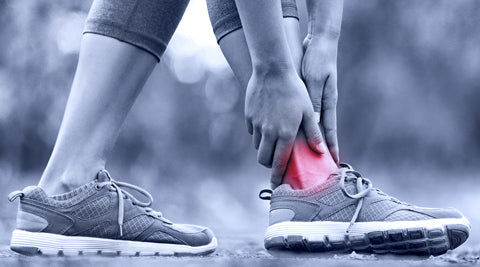
How to avoid running injuries: Prevention and treatment
Share
Running is a wonderful form of exercise that provides both physical and mental well-being, but it can also lead to injuries if the necessary precautions are not taken. Everything from overload to incorrect running technique can contribute to injuries such as runner's knee, shin splints or plantar fasciitis. In this blog post, we will go over how you can prevent common running injuries and what you should do if the injury first appears.
1. Choose the right running shoes
A. Shoe fitting
One of the most important factors in avoiding injury is wearing shoes that fit your feet and your running style. Good running shoes provide the necessary support, cushioning and stability. It is a good idea to have a professional analyze your running style so that you can find shoes that perfectly suit your needs.
B. Change your shoes regularly
Running shoes lose cushioning and support over time. A general advice is to change your shoes after 500-800 kilometers, depending on your body weight, running style and the shoe's material. Well-worn shoes can significantly increase the risk of injury.
2. Gradual increase in training volume
A. Avoid overtraining
One of the most common causes of running injuries is too rapid an increase in the amount of training. It is important to increase the distance and intensity gradually, so that the body has time to adapt. A rule of thumb is not to increase your training volume by more than 10% per week.
B. Listen to your body
Pain and discomfort are signals from your body that something is not right. If you experience persistent pain, it is important to rest and possibly adjust your training plan. Ignoring pain can lead to more serious injuries.
3. Strength training for injury prevention
A. Strengthen the core and hip area
Many running injuries occur due to weakness in the core muscles and hips. By strengthening these areas, you can improve your stability and running technique, reducing the risk of injuries such as runner's knee and shin splints.
B. Include specific exercises
Exercises such as squats, lunges and the plank are good for building strength in the legs and core. Also include exercises that focus on the ankles and feet, as these areas take a lot of the strain during running.
4. Correct warm-up and cool-down
A. Dynamic heating
Before you start running, it is important to warm up your body with dynamic exercises such as high knee lifts, leg raises and arm and shoulder circles. This increases blood flow to the muscles and prepares the body for the load to come.
B. Cooling and stretching
After the run, it is important to calm down with light jogging or walking, followed by stretching. Focus on the muscles you have used the most, such as thighs, calves and hip flexors. This can help reduce stiffness and prevent injury.
5. Variation in training
A. Avoid uniform loading
Repetitive strain on the same muscles and joints can lead to overuse injuries. By varying the exercise, for example by including cycling, swimming or strength training, you give the body a break from the one-sided strain that running can give.
B. Vary the substrate
Try running on different surfaces, such as grass, gravel, or off-road, instead of always running on asphalt. Softer surfaces can reduce the impact load on the joints, and varying the surface provides better variation in muscle use.
6. Treatment of common running injuries
A. Runner's knee
Runner's knee is characterized by pain around or behind the kneecap. It is often the result of overuse or weakness in the hips. Treatment includes rest, icing, stretching and strengthening of the hips and quadriceps.
B. Shin inflammation
Shin inflammation often occurs when you increase the amount of exercise too quickly. Treatment involves reducing the training intensity, using ice, and ensuring good foot and calf strength. Correcting the wrong running style and choosing the right shoes may also be necessary.
C. Plantar fasciitis
Plantar fasciitis causes pain under the foot, especially in the heel area. Treatment includes rest, icing, stretching of the Achilles tendon and plantar fascia, and the use of supportive shoes or insoles.
7. Preventive tips for long-term enjoyment of running
A. Restitution
Recovery is an important part of your training plan. Be sure to include rest days and alternative forms of exercise to allow the body to recover. The recovery time gives the muscles time to repair and get stronger, which prevents overuse injuries.
B. Good nutrition
A balanced diet that provides sufficient energy and nutrients is important for injury prevention. Make sure you get enough protein, carbohydrates and healthy fats to support muscle repair and maintain energy levels.
C. Regular massage
Massage can help loosen tight muscles and connective tissue, as well as improve blood circulation. This can be particularly useful after long running sessions or as part of your recovery routine.
Summary
Injuries can be an unfortunate part of running, but with the right preventative measures, many of them can be avoided. By choosing the right shoes, training smartly, including strength training, and listening to your body, you facilitate long-term running pleasure without interruption. Should you still sustain an injury, early treatment is the key to quickly getting back on your feet. Remember that the most important thing is to take care of your body, so that you can continue to enjoy running for many years to come.
